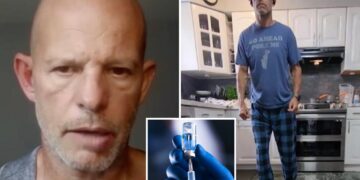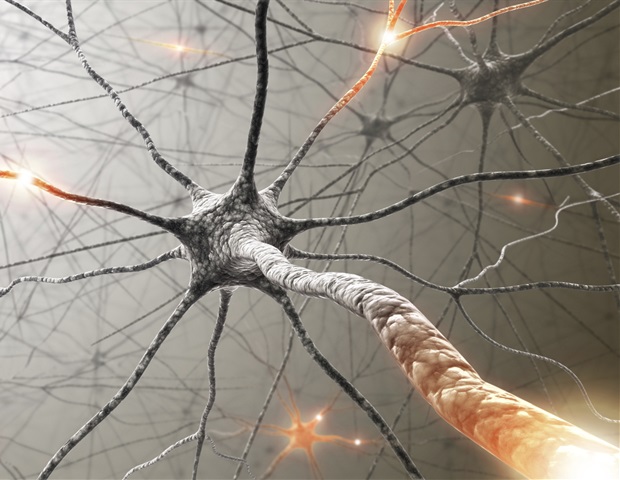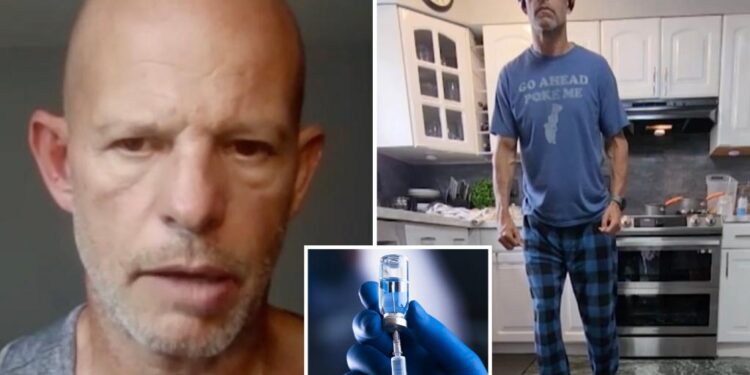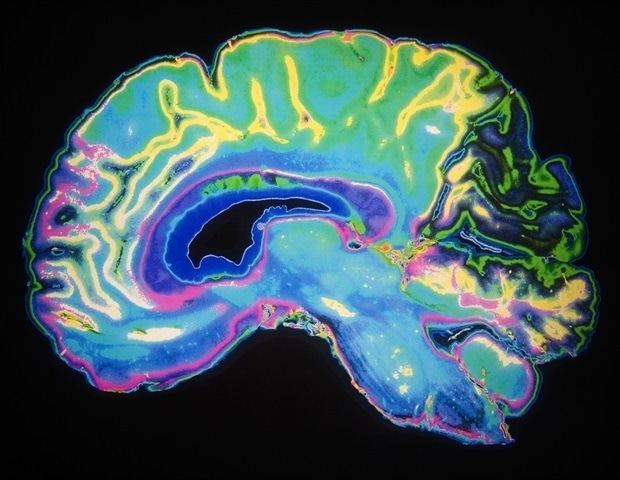An experimental drug could help improve movement in patients with spinal cord injuries.
NVG-291, an injectable peptide, was tested in a Phase 2 trial with eligible patients, some of whom achieved notable results.
Larry Williams, a trial participant based in Philadelphia, Pennsylvania, shared with Fox News Digital that he has been able to walk again after an accident that left him paralyzed.
Williams, 58, was riding a mountain bike on a small trail when he crashed into a tree. Although he was wearing a helmet, he “instantly broke” his vertebrate C4 to C6 (specific bones of the cervical spine).
He underwent spinal surgery, but was paralyzed for two weeks until his body began to “wake up” and regained some movement after starting therapy.
Williams could walk “a little bit” with the help of a walker, but still had complications with mobility in areas such as his hands. He also lost 40 pounds after the accident.
After some research, he discovered the NVG-291 assay and it was considered a viable candidate, he told Fox News Digital.
For three months, starting in April 2024, Williams received a daily injection of the drug followed by an hour of physical therapy, which included hand exercises and walking with a harness on a flat track or treadmill.
Williams also underwent blood tests and electrophysiological tests to measure the electrical activity of his nerves and muscles, as well as physical tests once a month.
At the end of the test, Williams reported that he could walk 10 meters (32.8 feet), balanced with a walker, in 15 seconds, an improvement from 45 seconds.
Although he hasn’t received the medication since July 2024, Williams is still seeing physical improvements more than a year later.
“I’m not exercising much. I’m not currently in therapy,” he told Fox News Digital. “But just a couple of days ago, I got up and tried to stand, balance, and lift one foot off the ground. I was able to do it for 30 seconds.”
“I hadn’t been practicing this. I can’t explain how it happened,” he added. “There are small improvements that continue to occur.”
Williams said he had tried the same maneuver six months earlier and couldn’t keep his foot on the ground for even three seconds.
Since the test, Williams has continued to improve her ability to walk and can even swim in the pool.
“I reach out to other people with the same injury as me and it seems like a lot of them, after years and years of therapy, get to where I am,” he said. “And it seems like they’ve given me a shortcut… I would love to go back to the life I had before, being completely independent.”
After taking the experimental drug, Williams said he has been able to perform physical tasks “easily and quickly.”
“My leg movement seems to be a little smoother and less restricted as time goes on,” he said. “I’m not going to give up. I’m going to keep trying.”
How the drug works
In a separate interview with Fox News Digital, lead researcher Dr. Monica Perez, scientific chair of the Shirley Ryan AbilityLab in Chicago and professor of physical medicine and rehabilitation at Northwestern University, said the drug was first tested in animals, which showed improved locomotor function (movement).
The researchers then conducted a randomized clinical trial in humans, in which half of the participants received the drug NVG-291, which contained a repair molecule to improve nervous system function.
The drug is a peptide, which is a small protein that works as an obstacle remover. After a spinal cord injury, the body sends signals that tell nerve fibers to stop growing. This medication blocks those signals, so the nerves have a better chance of growing back.
“This peptide can block those inhibitory signals,” Ryan said. “There is little evidence in animals that it can actually improve neuron growth.”
Although GLP-1 receptor agonists, best known for weight loss and diabetes treatment, are a peptide, Perez said this treatment for spinal cord injuries works differently.
“It has a specific mechanism and is more related to repair, to try to improve the growth of neurons that are affected by an injury to the central nervous system,” he said.
Spinal cord injuries are typically addressed with cellular therapies, such as stem cells and bone marrow stromal cells, Pérez noted.
This peptide approach, by contrast, is “easy to administer,” can be done at home, achieves a “similar goal,” and is “extremely safe,” he added.
Perez said more research is needed to determine how long the effects of this medication will last.
“We observed strong electrophysiological changes in the group that received the drug compared to the placebo group, but we do not have follow-up measurements,” he said. “We have no way of understanding the actual duration of these treatments.”
Since there is currently no FDA-approved treatment for spinal cord injuries, Perez said those involved in this research are “very dedicated” to the advancement of this science.
While each patient may react differently, Williams said he would recommend this treatment to other people with spinal cord injuries.
“It could really change things for people with injuries like mine,” he said. “I’m just praying that everyone can have a chance to get their lives back.”














